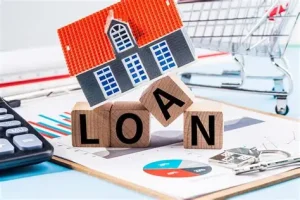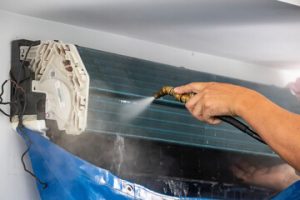Owning a home is a dream many people work toward for years. That dream often starts with a single decision: applying for a home loan. These financial tools have evolved beyond simple borrowing, becoming essential gateways to stability, investment, and generational security. Their future is shaped by shifting economic realities, digital innovation, and changing consumer expectations.

The modern home loan is more than a fixed-term agreement between lender and borrower. It is a dynamic financial product that adapts to different life stages, income patterns, and housing needs. Flexible repayment options, evolving interest structures, and tailored loan packages are now common. These changes reflect a new understanding of how people live, earn, and invest. Contact Sparrow Home Loans for professional help.
In the past, the process of getting a home loan was long, complex, and intimidating. It involved piles of paperwork, endless meetings, and rigid qualifications. Today, technology has transformed that experience. Digital platforms allow borrowers to compare options, calculate eligibility, and even get approvals without leaving their homes.
The role of home loans in wealth creation is also changing. A home is no longer just a place to live; it is a long-term asset and a key part of a financial portfolio. As property markets evolve, many buyers view their first loan as the foundation for future investments. Strategic borrowing allows them to upgrade, refinance, or diversify their property holdings over time.
The criteria for loan approval have expanded beyond traditional measures. While income and credit score remain important, lenders now consider broader indicators of financial stability. Consistent savings habits, alternative income streams, and even digital payment histories can influence approval decisions. This shift opens the door for more diverse borrowers.
Personalization is becoming a defining feature of the home loan landscape. Borrowers can now choose terms that match their goals, whether they want lower monthly payments, faster payoff times, or flexibility for future refinancing. Some loans even include built-in payment holidays or adjustable features tied to life events. This customization makes homeownership more accessible and sustainable.
The rise of remote work and lifestyle changes has also influenced how people think about home loans. Many are seeking properties in areas that were previously considered secondary or rural. This shift requires lenders to adapt their valuation methods and risk assessments. It also creates opportunities for creative loan structures tailored to unconventional properties.
Sustainability is emerging as a powerful force shaping lending decisions. Green home loans, which incentivize energy-efficient construction or renovation, are gaining traction. These products reward borrowers who invest in eco-friendly materials, renewable energy, or smart home technology. In return, they often receive lower interest rates or extended repayment terms.
Home loans are also playing a crucial role in bridging generational wealth gaps. Younger buyers face challenges such as rising property prices and student debt. Innovative lending programs, including shared equity arrangements and income-linked repayment models, are designed to support them. These approaches align repayment with real financial capacity, reducing barriers to ownership.
The secondary market for home loans continues to evolve as well. Securitization and digital trading platforms allow financial institutions to manage risk more effectively. This, in turn, frees up capital for new lending and contributes to market stability. It also makes mortgage-backed investments more accessible to a wider range of investors.
Borrowers today have more power and information than ever before. Online tools make it easy to compare rates, analyze loan terms, and negotiate better deals. Transparency has become a competitive advantage, with lenders offering clear explanations of costs, fees, and repayment structures. This empowers buyers to make decisions that align with their financial goals.
Refinancing has become an essential strategy in long-term homeownership. It allows borrowers to take advantage of lower interest rates, consolidate debt, or unlock equity for renovations and investments. Modern refinancing options are more flexible and faster to secure, turning what was once a complex process into a simple financial decision.
The rise of data-driven lending is also reshaping the industry. Predictive analytics help lenders assess risk more accurately, leading to fairer interest rates and more inclusive lending practices. Artificial intelligence can process applications in minutes, while machine learning models identify patterns that traditional underwriting might miss. This leads to smarter, faster decisions for both parties.
Despite these innovations, home loans remain deeply personal. They are tied to life’s most meaningful milestones — marriage, family, stability, and legacy. This emotional connection means lenders must go beyond financial products to offer support, guidance, and education. Building trust and long-term relationships is now as important as competitive rates.
Government policies and financial regulations continue to influence the market. Incentives for first-time buyers, tax benefits, and affordable housing programs all shape demand. On the other hand, stricter lending standards introduced after financial crises aim to protect consumers and maintain stability. Borrowers must navigate this evolving regulatory environment carefully.
Cultural shifts are also changing how people approach home loans. Many now view co-ownership or fractional property investment as viable alternatives. These models allow friends, family, or groups to share both costs and equity, reducing the burden on individual borrowers. Home loan products are adapting to support these new ownership structures.
Economic uncertainty remains a major factor in loan decisions. Inflation, employment trends, and housing supply can all impact borrowing capacity and interest rates. Savvy borrowers plan for these variables by choosing flexible terms or building financial buffers. Lenders, in turn, develop risk models that anticipate and adapt to market fluctuations.
The intersection of technology and finance is paving the way for entirely new types of home loans. Blockchain is being explored as a tool for secure, transparent transactions. Smart contracts could automate payments and ensure compliance with loan terms. These advancements promise to reduce costs and eliminate inefficiencies in the lending process.
Home equity loans are gaining popularity as homeowners seek ways to leverage their properties without selling them. These loans provide access to funds for education, business ventures, or further real estate investments. They also demonstrate how homeownership can serve as a foundation for broader financial goals beyond housing.
For many, the most significant shift is psychological. Home loans are no longer seen as a burden but as a pathway to financial empowerment. They allow individuals to turn income into equity, transform savings into assets, and build a legacy for future generations. This mindset shift is changing how people plan their finances and prioritize their goals.
Education is playing a larger role in the borrowing journey. Lenders and financial institutions are investing in resources that help borrowers understand terms, risks, and strategies. Workshops, online courses, and personalized advice reduce confusion and empower better decisions. An informed borrower is not only more confident but also more likely to succeed in repaying their loan.
The future of home loans will likely involve even more collaboration between borrowers and lenders. Products will be co-designed based on feedback and real-world usage data. Dynamic interest rates may adjust automatically based on market conditions or personal financial performance. These innovations aim to create relationships that benefit both parties over the long term.
Crisis resilience is another emerging focus. Recent global events have shown how quickly financial circumstances can change. Lenders are exploring built-in protections, such as temporary payment freezes or income-based adjustments, to help borrowers weather unexpected challenges. These features turn home loans into tools of stability rather than sources of stress.
Even the concept of ownership itself is evolving. Some future loan models may include options to convert mortgages into shared equity arrangements. Others might allow borrowers to trade property shares or integrate their loans with investment portfolios. These developments blur the line between homeownership and financial strategy.
At their core, home loans remain one of the most powerful tools in personal finance. They turn aspirations into reality and create opportunities that would otherwise be out of reach. Their evolution reflects broader changes in how we live, work, and invest — and they will continue to adapt as those changes accelerate.
In the coming years, the boundaries of what a home loan can do will continue to expand. They will not only finance homes but also support sustainability, innovation, and wealth creation. They will become smarter, fairer, and more aligned with the lives of those who rely on them.
The dream of homeownership is timeless, but the path to achieving it is being rewritten. With every innovation, the process becomes more inclusive, more flexible, and more attuned to the realities of modern life. Home loans are no longer just contracts; they are partnerships — and they are key to building the future we all envision.


